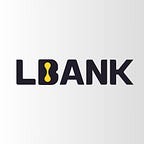Effective Technical Analysis: Tools for Analyzing Bullish Trends
In trading, the age-old saying, “the trend is your friend,” remains a guiding principle for successful traders. Recognizing and aligning with market trends is fundamental to making profitable trades. What is a trend? Simply put, a trend is the way the market is going. As such, a ‘bullish trend’ is when prices in an industry or the overall market are going up.
It shows that investors are feeling positive. If there’s a bullish trend for a while, it means the market is getting better. In this article, we will explore different technical analysis methods including indicators to help traders identify and analyze bullish trends accurately.
What are trends in technical analysis?
Technical analysis relies on historical price data, yet its primary objective is to anticipate forthcoming market movements. This analytical approach proves invaluable for discerning market dynamics and individual cryptocurrency behavior, including trading volumes. Traders and investors leverage these trends to strategically time their market entry or exit. Now, let’s look into the two principal types of trends: bullish and bearish.
- Bullish Trends: A bullish trend emerges when the asset’s price consistently achieves higher highs and higher lows. This upward trajectory is characterized by an ascending movement, showcasing a positive market sentiment. During a bullish trend, cryptocurrency prices or market indicators exhibit a sequence of consecutive higher peaks and troughs.
- Bearish Trends: Conversely, a bearish trend manifests in the crypto market when prices consistently register lower highs and lower lows. This downward trajectory signifies a bearish sentiment, with a descending movement prevailing. In a bearish trend, crypto prices or market indicators demonstrate a sequence of consecutive lower peaks and troughs.
Indicators to identify bullish trends
Super Trend Indicator
The Super Trend indicator stands out for its simplicity — a green line signals a buy, while a red line signals a sell. However, like any indicator, it has its limitations, especially when the market is moving sideways with low momentum. In such scenarios, relying solely on the Super Trend can result in false signals and potentially lead to losses.
Triple Super Trend Indicators
To overcome the issue of false signals during sideways movements, one effective strategy involves using three Super Trend indicators simultaneously. By adjusting the settings and setting different ATR periods for each, traders can filter out noise and focus on strong trends.
For instance, setting the ATR period to 12 and the multiplier to 3 for the first Super Trend, 10 and 1 for the second, and 11 and 2 for the third, creates a powerful combination. The strategy involves entering a trade only when all three Super Trend lines align in the same color, ensuring a more reliable indication of a strong trend.
Pairing with a 200-Day Moving Average
Another potent strategy involves combining the Super Trend indicator with a 200-day moving average. This strategy aims to capture both short-term and long-term trends. When the Super Trend line is green and the price is above the 200-day moving average, it signals a potential long trade. Conversely, a red Super Trend line and a price below the 200-day moving average suggest a possible short trade.
This strategy offers a balanced approach by leveraging the Super Trend’s proficiency in identifying short-term trends and the 200-day moving average’s ability to highlight long-term trends.
The Ichimoku Indicator
A bonus strategy involves integrating the Ichimoku indicator with the Super Trend for a more comprehensive analysis. The Ichimoku Cloud, when used in conjunction with the Super Trend, provides additional confirmation for entering or exiting trades.
This strategy dictates entering a long trade only when the Super Trend line is green, and the price is above the Ichimoku Cloud. Conversely, for a short trade, the Super Trend line should be red, and the price should be below the Ichimoku Cloud. Exit strategies can include a predefined profit ratio or exiting when the price moves inside the Ichimoku Cloud.
Analyzing Bullish Trends with Candlesticks
In addition to technical indicators, candlestick chart patterns play a crucial role in analyzing crypto trends. Candlestick patterns provide insights into market sentiment, depicting whether the trend is bullish, bearish, or sideways.
Types of Bullish Candlestick Patterns:
- Hammer: Indicates a potential reversal after a downtrend.
- Piercing Pattern: Suggests a reversal when a bullish candle follows a bearish one.
- Bullish Engulfing: Occurs when a larger bullish candle engulfs a smaller bearish candle.
- Morning Star: Signifies a potential trend reversal, usually at the bottom of a downtrend.
- Three White Soldiers: Three consecutive long bullish candles indicating a strong uptrend.
Other Key Indicators for Bullish Trends
Identifying bullish trends requires a keen understanding of key indicators that offer valuable insights into market movements.
- Moving Averages: Utilize various moving averages to identify the direction of the trend.
- Relative Strength Index (RSI): Monitor overbought and oversold conditions for potential trend reversals.
- Volume: High volume during an uptrend indicates strong buying interest.
- Price Patterns: Recognize and interpret price patterns to anticipate trend changes.
Wrapping Up
Identifying and analyzing bullish trends is important for any trader seeking success in the financial markets. The Super Trend indicator, when used strategically alongside other indicators like moving averages, RSI, and candlestick patterns, can significantly enhance a trader’s ability to identify and capitalize on bullish trends.
Understanding and leveraging these indicators can significantly contribute to a trader’s success. Overall, as a trader analyzing the volatile crypto market, it is important to stay informed, exercising caution, and continuously refining strategies. By doing so, you can confidently navigate the complexities of the market, align with bullish trends, and make well-informed, profitable trades.
The opinions expressed in this blog are solely those of the writer and not of this platform.
